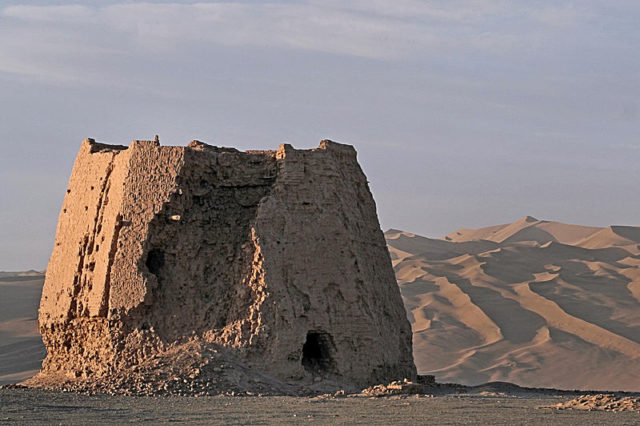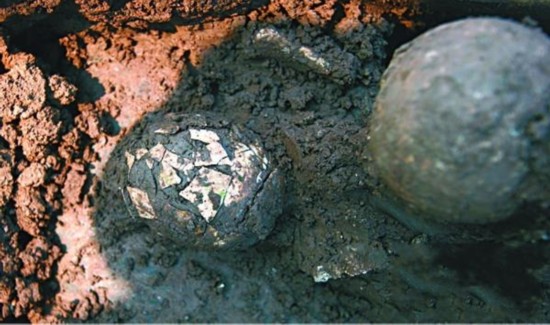While digging in the southwest region of China, Archaeologists have stumbled upon an egg that is roughly 2,000 years old. According to a local online news agency, the scientists were conducting research on a tomb which once belonged to the Han Dynasty that ruled the region from 202BC to 220AD.
The site under research once housed a people from Han era called “Huagjinwan”. Its ruins in Xishui County were first discovered in 2009, and ever since have been the focus of many studies and excavation. The researchers from Provincial Institute of Cultural Relics and Archaeology made the astonishing discovery; perhaps one of its kind in the region.
Commenting on his team’s startling discovery, the project head of the Huangjinwan ruins exploration and excavation project, Mr. Zhang Gaike, said that the unearthing of the egg was surprising for the experts.
He asserted that the discovered egg closely resembles the egg of a chicken due to its size and shape; however, it cannot be said with certainty.
Mr. Gaike said that the experts tried to sift off thousands of years of mud and soil from the egg. However, upon contact with the brush, the fragile shell simply cracked into many fragments.
The discovery of an egg in a Han dynasty tomb is not a usual matter; it explains to a great length some of the differences that Han dynasty possessed in comparison with Shang and Zhou dynasties. Dr. Gaike said that the egg points towards a very significant aspect of the lives of people who lived under Han dynasty.
Dr. Gaike further explained that the people in the earlier dynasties such as Shang and Zhou buried their relatives with expensive and delicate ornaments mostly made out of Bronze.
During Han dynasty’s rule people shifted the customs from ornaments to simple household items that they buried with their loved ones.
In the next stages of the discovery, scientists are determined to carry out detailed testing on the egg to find out its precise origin and type.

One challenge that this ancient egg poses to the experts is the fact that they have to find out the reasons as to how the fragile shell stayed intact for 2,000 years; a shell that was cracked with a gentle touch of a brush.
In the history of China, the Han dynasty is revered as the first power that unified China, which was previously divided into many big and small tribal regions, eventually turning China into a powerful empire.
The site of Huangjiwan ruins covers an area of 40,000 square meters and is considered as the largest Han dynasty site discovered in the region; situated in Chishui River basin.
The excavation work on the Han site is ongoing; the discovered egg has been transferred to much safer place and has been cleaned thoroughly in order to get as much information as possible.
